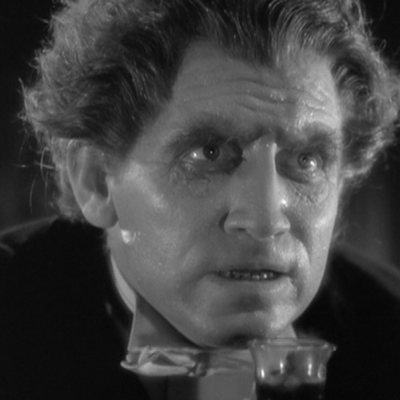For showtimes, click here.
In 1886, Robert Louis Stevenson’s famous novel, The Strange Case of Dr. Jekyll and Mr. Hyde, was published. The story of a scientist whose experiments lead to a personal battle of good versus evil was brought to the big screen by MGM studios in 1941. While familiar faces such as Spencer Tracy, Ingrid Bergman, and Lana Turner helped bring this legendary tale to life, there is always more than one side to the story. Here are few facts you may not have known about the film.
1. MGM lost the 1931 version for over 35 years.

In 1931, Paramount studios produced the first sound version of Dr. Jekyll and Mr. Hyde. After acquiring the rights to the film, MGM Studio executives hid the film “to avoid competition” with their remake. Due to the lack of copies available, the 1931 film ultimately became “lost” and was not made available again until 1967.
2. Turner almost played Ivy Peterson.

The original casting of the film had Ingrid Bergman in role of Beatrix Emery. However, Bergman was growing tired of being cast as the “good girl” and felt the role of Ivy was more of a challenge. Eventually, Bergman convinced producers to allow her to switch roles with Turner.
3. Tracy wanted Hepburn to play Beatrix AND Ivy.

The on-screen partnership of Spencer Tracy and Katharine Hepburn was legendary. Over the course of 25 years, the two starred in nine films together. It seems only natural for Spencer Tracy to request Hepburn be cast as Beatrix and Ivy. Tracy also thought the same woman playing both roles would “reinforce the theme of the good and bad qualities in every individual."
4. Ivy doesn't exist in Stevenson's story.

Surprisingly, the screenplay for Dr. Jekyll and Mr. Hyde wasn’t adapted from the original novel. Instead, the film follows the storyline of Thomas Russell Sullivan’s popular 1887 stage adaption. Sullivan’s version was the first to depict the character Jekyll in a more evil light. The stage version also added female characters to the storyline, whereas Stevenson’s story had none.
5. The film was extremely censored.

The Motion Picture Production Code was first published in 1930. It was one of the earliest attempts to implement censorship guidelines for film productions in the United States. Due to the code, Jekyll’s violent actions mentioned in the plot are never fully detailed. In addition, a scene in which Hyde whipped two horses, while the faces of Ivy and Beatrix appeared, was originally cut for being “too suggestive."
















